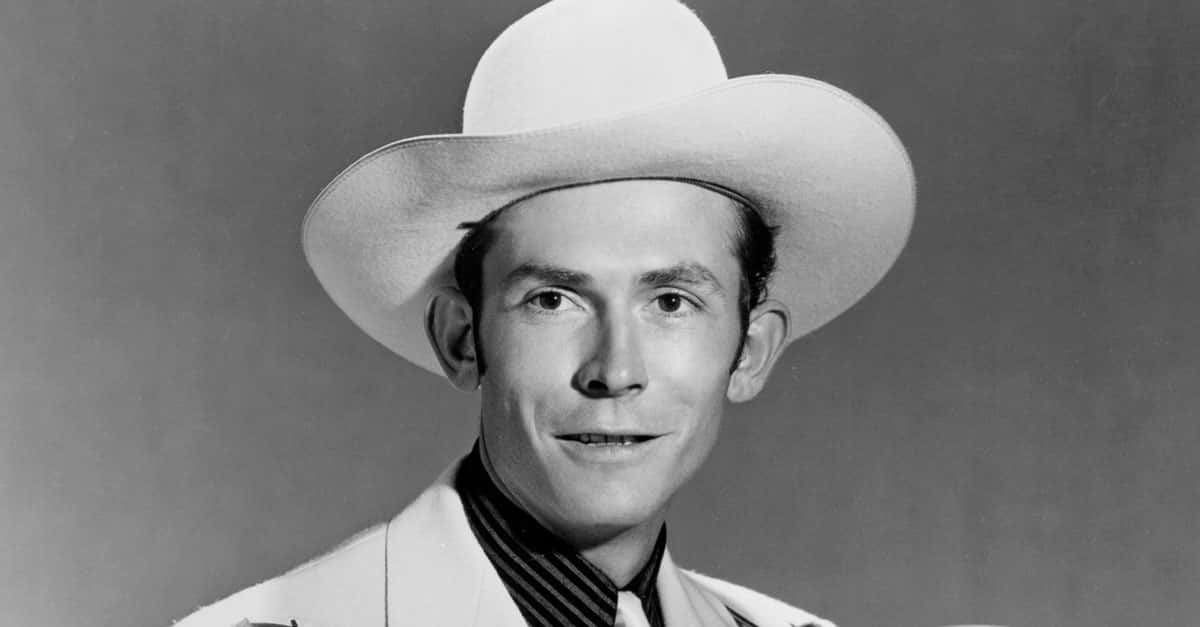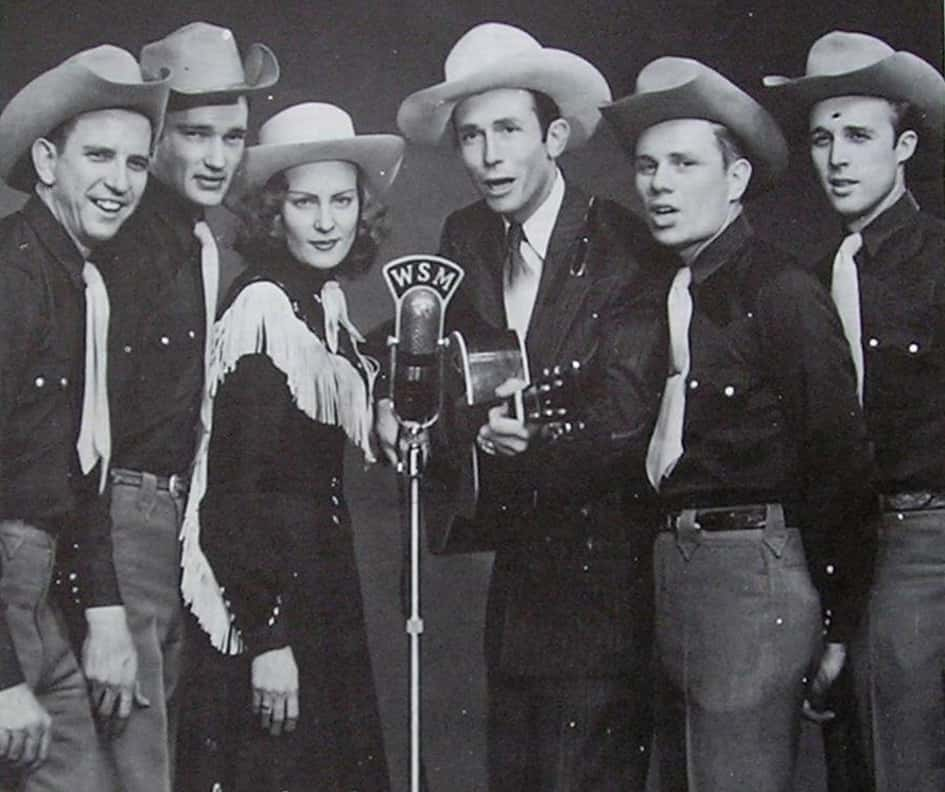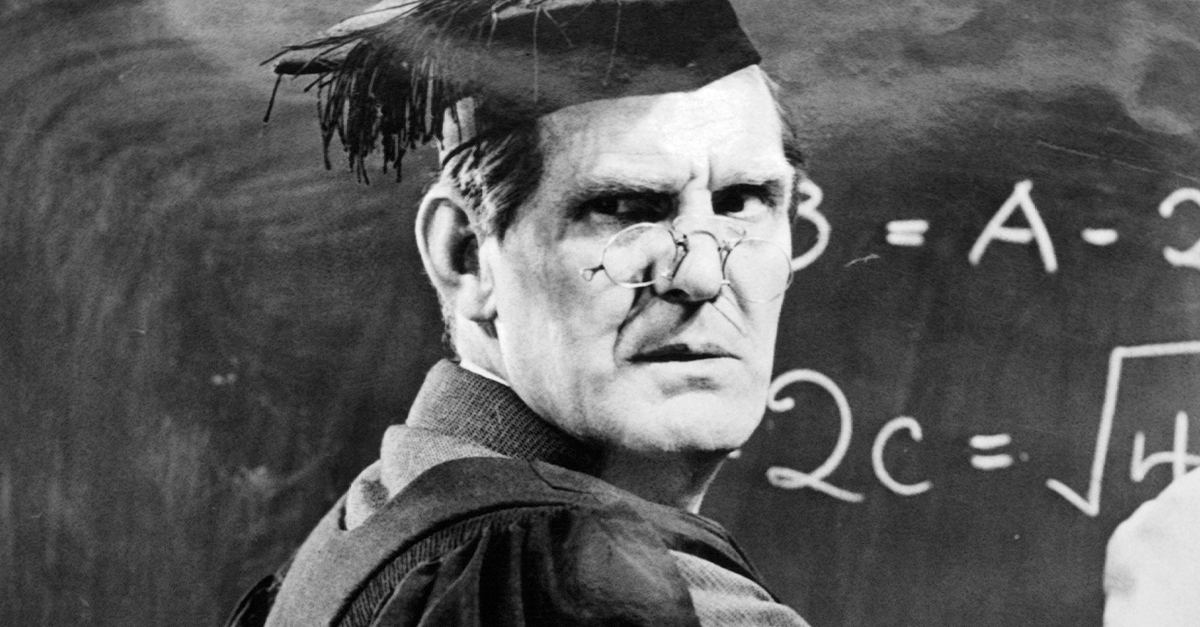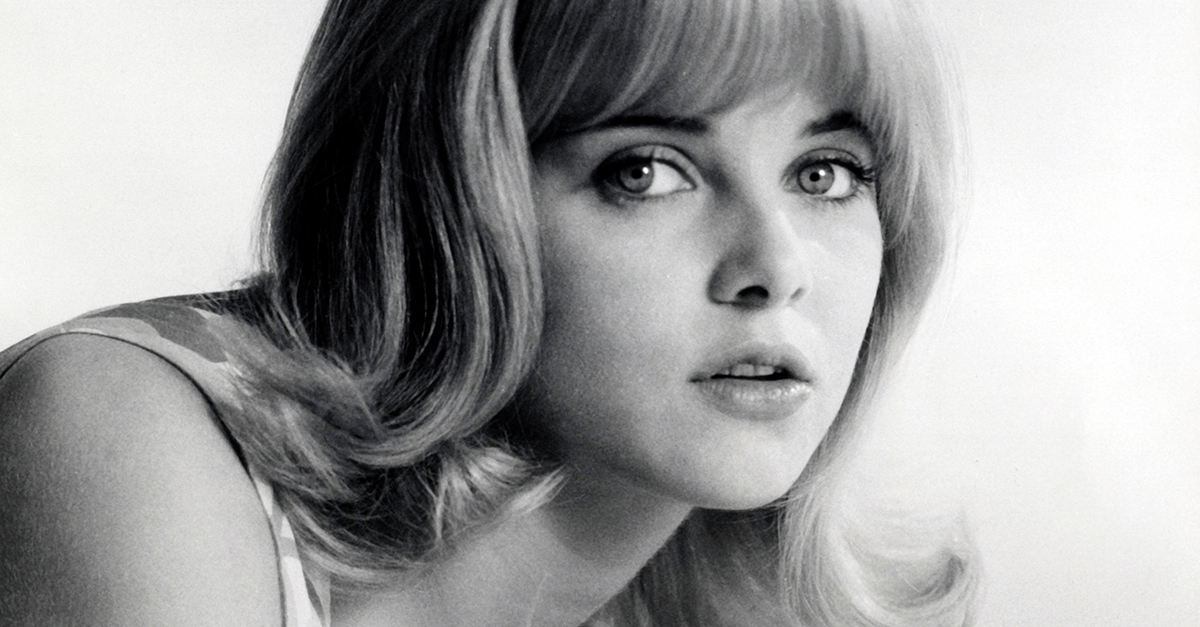The Loss Of An Icon
Hank Williams made a huge splash in the early country music scene. His life behind the music is equally as tragic as the subjects he wrote about, plagued with substance use and the highs and lows of fame. Many details come as a great surprise considering his immense legacy.

1. He Was Born To Modest Parents
Hiram “Hank” Williams was born on September 17, 1923, in Mount Olive, Alabama, to his parents, Jessie Lillybelle and Elonzo Huble Williams. He was their third child, and he was born with spina bifida occulta. This is a birth defect that impacted the spinal column, and it caused him strife for his entire life.
This wasn’t the only early tragedy that Williams faced.
2. He Had A Chronic Condition
The first child born to the Williams family didn’t live beyond two days. Their second child, Irene, was born a year later, followed by Hank Williams two years after that. His mother was incredibly involved in the musical and religious community, and she sang hymns and played the organ at the local church.
This early exposure to music and spirituality would be a major influence on young Williams.
 Hank_Williams_publicity.jpg: MGM Records
derivative work: GDuwenTell me!, Wikimedia Commons
Hank_Williams_publicity.jpg: MGM Records
derivative work: GDuwenTell me!, Wikimedia Commons
3. He Was Interested In Music Early
Not only was his mother musically inclined, Hank Williams also displayed an inclination toward the art from an early age. At six, someone gifted Williams a harmonica, which was his first instrument. This gave him his first entry point into learning music.
But even with music at his side, Williams didn’t have a stable early life.
 MGM Records, Wikimedia Commons
MGM Records, Wikimedia Commons
4. He Was Faced With Struggles Early
The Williams family moved around a lot, bouncing around towns in southern Alabama. Then, tragedy struck. In 1930, Elonzo began experiencing paralysis in his face. Doctors at the Veterans’ Administration clinic diagnosed him with a brain aneurysm. After that, Elonzo went into a hospital for eight years before eventually succumbing to his condition.
This left Williams and his family in the lurch.
 Michael Ochs Archives, Getty Images
Michael Ochs Archives, Getty Images
5. He Was Able To Learn The Basics
In late 1933, Hank Williams exchanged places with his cousin, Opal, for a year. He lived with his aunt and uncle in Fountain, Alabama. There, he learned the basics of guitar, and he discovered new music at dances and churches in the area. After the year was complete, he moved back in with his mother, who had started a boarding house in Greenville, Alabama.
But things grew bleak as the Great Depression went on.
 Rivers Langley; http://www.phoenixrivers.blogspot.com, Wikimedia Commons
Rivers Langley; http://www.phoenixrivers.blogspot.com, Wikimedia Commons
6. He Was The Son Of A Hard Worker
Hank Williams’ mother had to work multiple jobs to keep the family afloat—and then, the boarding house, a major source of their income, burned down. The family moved across the city, where she created a second boarding house, which had a small garden. Williams and his sister tended to it, and sold fruits and vegetables from it to keep the family afloat.
It was while they lived in Georgiana that Williams met someone who would change his life.
 I Saw the Light (2015), BRON Studios
I Saw the Light (2015), BRON Studios
7. He Was Taught By An Unconventional Teacher
Williams’ mother organized lessons for young Hank with a street performer, Rufus “Tee-Tot” Payne, a Greenville icon known primarily by his nickname. Williams was immediately enamored with learning the instrument, and he trailed Tee-Tot whenever he could to learn anything the musician was willing to teach him.
But Williams still needed his own guitar.
 Sony Pictures Classics, I Saw the Light (2015)
Sony Pictures Classics, I Saw the Light (2015)
8. He Was Young When He Got His First Guitar
Years later, many different residents of Georgiana claimed they were the ones to buy the burgeoning musician his first stringed instrument, but Hank Williams set the record straight. According to an interview with the San Francisco Chronicle, he was around eight years old when he got his first guitar. It was a gift from his mother, who bought it second-hand for $3.50.
But he still had to face one more dramatic change before his career took off.
 Sony Pictures Classics, I Saw the Light (2015)
Sony Pictures Classics, I Saw the Light (2015)
9. He Was Surrounded By Family
In 1937, Williams got into an altercation with a teacher at his school, and when he mother lodged a complaint and demand the teacher be fired, the school refused. As a result, the Williams family relocated one more time to Montgomery, Alabama. They opened a boarding house in the downtown area in July 1937. Around that same time, Williams began going by Hank, rather than Hiram.
He also participated in a contest that would change his life.
 Sony Pictures Classics, I Saw the Light (2015)
Sony Pictures Classics, I Saw the Light (2015)
10. He Was A Quick Success
While living in Montgomery, Hank Williams signed up for a talent show. He sang an original song, “WPA Blues”, which borrowed the tune of Riley Puckett’s “Dissatisfied”. He didn’t know how to read music, and he had no formal musical education aside from what he learned from Tee-Tot. Still, Williams snagged first place and won $15 USD—about $300 in 2024.
Little did he know, his first real gig as a musician was on its way.
 Sony Pictures Classics, I Saw the Light (2015)
Sony Pictures Classics, I Saw the Light (2015)
11. He Was Ambitious
Hank Williams was looking for his next big chance, so he came up with an idea. He decided to perform on the sidewalk in front of a local radio station. His gamble paid off, and his abilities caught the eye of producers at the station. They gave him a handful of opportunities to play with a radio band led by Dad Crysel. His appearances on air were very successful, and when he started his own band, he already had a bit of a following.
When the Drifting Cowboys set up their first show dates, it was the start of something huge.
 Sony Pictures Classics, I Saw the Light (2015)
Sony Pictures Classics, I Saw the Light (2015)
12. He Was A Drop-Out
Hank Williams and the Drifting Cowboys toured all over southern Alabama, performing at dance halls, clubs, and private gatherings. Since he was only 14, Williams’ schooling got in the way of their performances. It left him with one option. He dropped out of high school to pursue his music career full-time. With his mother as the band’s manager, they were able to travel further afield, finding more and more success as they did.
But with all this newfound money and fame, Williams’ habits took a dark turn.
 Sony Pictures Classics, I Saw the Light (2015)
Sony Pictures Classics, I Saw the Light (2015)
13. He Was Too Interested In Substances
Williams was starting to form a dependency on the bottle. He was drinking more and more, which was only fueled by the money he earned with the band. But there was a dark reason behind his burgeoning addiction. He was using it to numb the chronic back pain he experienced. And, for the time being, Williams was keeping it together. it wasn’t threatening his performances or his appearance on the radio show he hosted.
But it wasn’t long until problems started to pop up.
 Sony Pictures Classics, I Saw the Light (2015)
Sony Pictures Classics, I Saw the Light (2015)
14. He Had To Rethink His Lineup
When the US entered into WWII in 1941, Hank Williams fell on hard times. The US Army didn’t draft him due to his back injury, but all his band members quit to serve overseas. He replaced them all, but his addiction was growing too severe for even the new members to handle. The replacement members didn’t last long and all ended up abandoning the band.
Then, in 1942, he lost the job that started it all.
 Sony Pictures Classics, I Saw the Light (2015)
Sony Pictures Classics, I Saw the Light (2015)
15. He Was Forced To Reevaluate
WSFA fired Williams from his radio show. The reason they discontinued his appearances was due to his “habitual drunkenness”, which was increasing in frequency. But while he was still there, he’d made a connection with a fellow musician and promoter, Roy Acuff. He cautioned Williams about his drinking.
In a couple of years, this relationship would become more than just a passing acquaintance.
 Sony Pictures Classics, I Saw the Light (2015)
Sony Pictures Classics, I Saw the Light (2015)
16. He Was Able To Find Other Work
After losing his job with the radio station, it looked like life might force Hank Williams to put a lid on his dreams. He took a position at the Alabama Drydock and Shipbuilding Company in 1942 for a year and a half. After that, Williams did a brief stint at Kaiser Shipyards in Portland, Oregon. But he couldn’t stay away from the south, and eventually returned to Mobile, Alabama.
It was 1943 when he met someone who would change everything.
 Sony Pictures Classics, I Saw the Light (2015)
Sony Pictures Classics, I Saw the Light (2015)
17. He Was Enamored With Her
Hanks Williams and Audrey Sheppard met in Banks, Alabama, at a medicine show. Their romance blossomed immediately, and the two lived in a hotel that same year while working at the shipyard together. Sheppard became a full-hearted supporter of Williams, and she wanted to help him take back his radio show.
However, the two lovebirds had some difficult decisions to make.
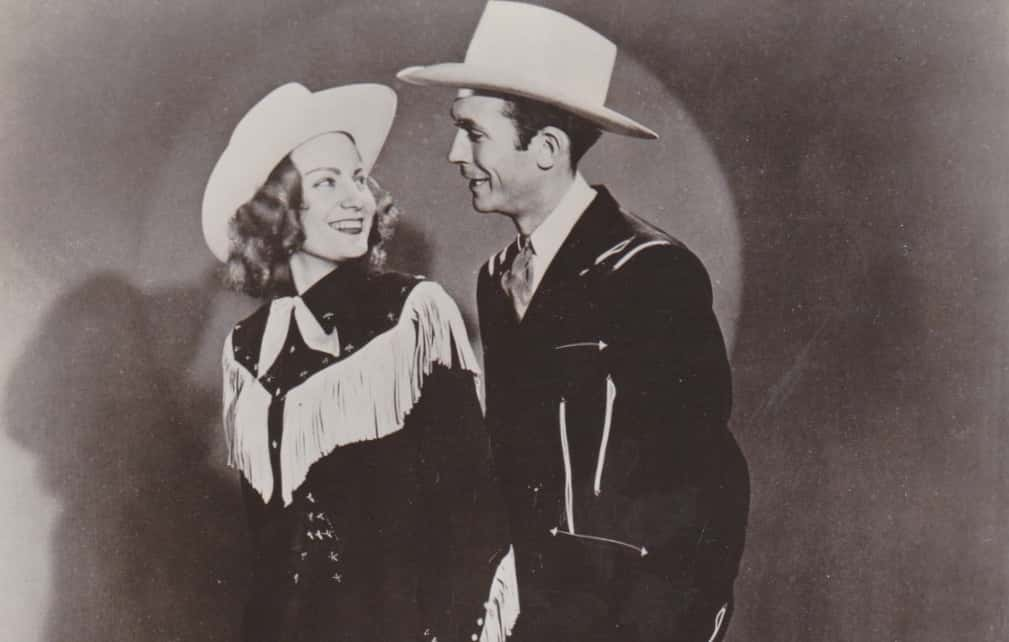 Wikimedia Commons, MGM Records
Wikimedia Commons, MGM Records
18. He Was Supported By His Love
Williams and Sheppard decided to move back to Montgomery to start a band. But first, they chose to commit themselves fully to one another. Sheppard was very recently divorced, but that didn’t stop the pair from taking the leap. They married in Andalusia, Alabama, in 1944 at a Texaco gas station.
As it turns out, gas stations would make another appearance during an important moment in Williams’ life.
 Sony Pictures Classics, I Saw the Light (2015)
Sony Pictures Classics, I Saw the Light (2015)
19. He Was Able To Get Back What He Lost
By 1945, Williams and Sheppard were back in Montgomery, and WSFA radio rehired Williams. He was writing original songs and even released a songbook titled Original Songs Of Hank Williams. This publication promoted his reputation as a songwriter.
He still hadn’t released an album—thankfully, an old connection changed that.
 Sony Pictures Classics, I Saw the Light (2015)
Sony Pictures Classics, I Saw the Light (2015)
20. He Was Rejected—For Now
The following year, on September 14, 1946, Nashville’s Grand Ole Opry auditioned Hank Williams after a recommendation from the iconic musician Ernest Tubb. Though they rejected him, the experience inspired Williams and his wife to pitch their music to Acuff-Rose Music, a newly formed label started by Roy Acuff, who had given Williams advice on his drinking years before.
Surprisingly, it wasn’t Acuff who took on Williams.
 Sony Pictures Classics, I Saw the Light (2015)
Sony Pictures Classics, I Saw the Light (2015)
21. He Was Signed By Multiple Companies
Hank Williams intrigued the label’s co-founder, Fred Rose, so he signed the young man. He brought Williams on for a six-song contract, after which he helped Williams sign with Sterling Records. Rose was in awe of the singer’s talent and knew Williams could do bigger and better things.
After the release of the songs, everything changed.
 Sony Pictures Classics, I Saw the Light (2015)
Sony Pictures Classics, I Saw the Light (2015)
22. He Was An Immediate Success
The success of Williams’ new songs was immense. Rose queried the newly created MGM Records to put out whatever Williams wrote next, and they signed him within a month. The following year, he released “Move It On Over”, which was an immediate hit in the country genre. Williams’ career was really taking a turn for the better now.
But little did he know, his time was running out.
 Sony Pictures Classics, I Saw the Light (2015)
Sony Pictures Classics, I Saw the Light (2015)
23. He Was Burdened By Problems At Home
In the early months of 1948, Hank Williams and his wife Audrey began having marital issues. Tension stemmed from Williams’ substance addiction. His reliance on the bottle wasn’t new, but the intensity had increased that year. His actions forced Audrey to do something. She gave him an ultimatum: his addiction, or her.
This wouldn’t be the last time the couple faced problems.
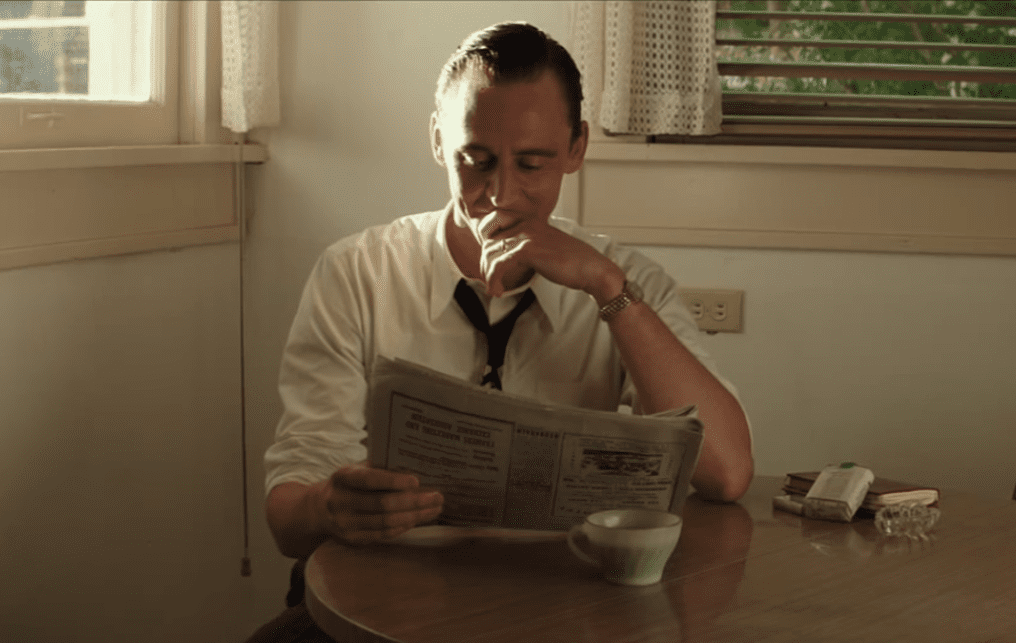 I Saw the Light (2015), BRON Studios
I Saw the Light (2015), BRON Studios
24. He Was Only Finding More Prosperity
After moving to Shreveport, Louisiana, joining a new radio show, and performing across the state and in eastern Texas, Hank Williams released more music that served to earn more and more fame. He did a version of “Lovesick Blues” that topped the Billboard charts for four months straight.
With the momentum of his career increasing, Williams revisited an old opportunity he had initially been rejected from.
 Sony Pictures Classics, I Saw the Light (2015)
Sony Pictures Classics, I Saw the Light (2015)
25. He Was To Seize A Special Chance
Williams’ manager, Oscar Davis, slotted him to perform at a Grand Ole Opry show. After it was a success, he and Davis negotiated to allow Williams to join the troupe officially. This meant big things for Williams, as he’d officially debuted with the broadcasting company.
He still had to do his first performance, and for that, he needed a band.
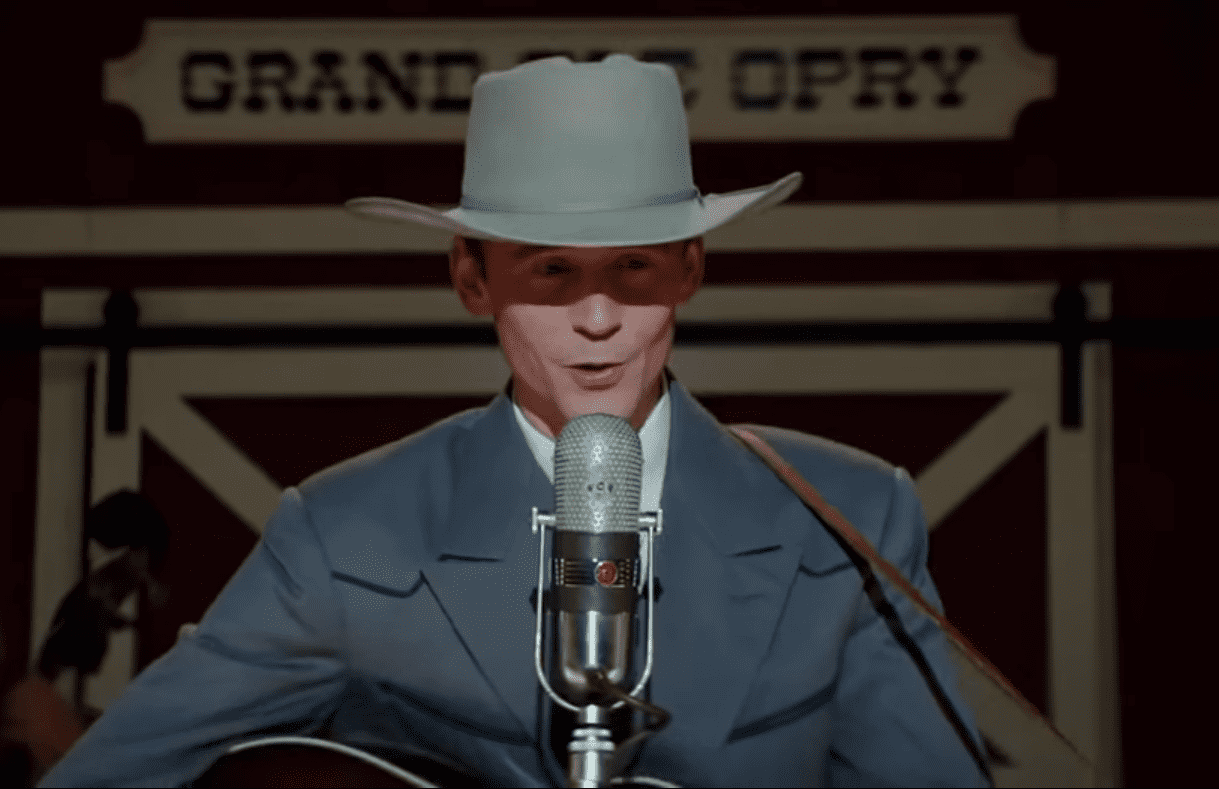 I Saw the Light (2015), BRON Studios
I Saw the Light (2015), BRON Studios
26. He Was A Major Crowd-Pleaser
Hank Williams brought back the Drifting Cowboys, this time with a different lineup. With a guitarist, a bassist, a fiddle player, and a steel guitar, this version of the Cowboys became the most famous iteration of the band. Their debut performance on June 11, 1949, received six encores.
His personal life was also about to take a new step.
 Sony Pictures Classics, I Saw the Light (2015)
Sony Pictures Classics, I Saw the Light (2015)
27. He Was Adding To His Family
The month before the Grand Ole Opry performance, Williams and Audrey welcomed their son, Randall Hank Williams, to the world. Having two major life changes within a month was quite the rollercoaster for Williams, but he kept on going.
After all, he was still gaining traction and popularity.
 Michael Ochs Archives, Getty Images
Michael Ochs Archives, Getty Images
28. He Was Recording Under Multiple Names
By the time the 1950s rolled around, Hank Williams was earning around $1,000 per show (equivalent to $13,000 in 2024). He also started recording morally-charged songs under the pseudonym “Luke the Drifter” and often added these sermon-like pieces to his regular set. At the same time, he was releasing song after song under his real name.
Life was moving along at a quick pace—but there was something sinister waiting in the wings.
29. He Struggled All The While
Williams’ substance issues were still a constant companion to his success—and they constantly threatened to take over. In May of 1951, he was sent to the North Louisiana Sanitarium to help him with his reliance on alcohol. He was released three days after his admission, and for a while, everything was fine.
Then, in November, things took a turn for the worse.
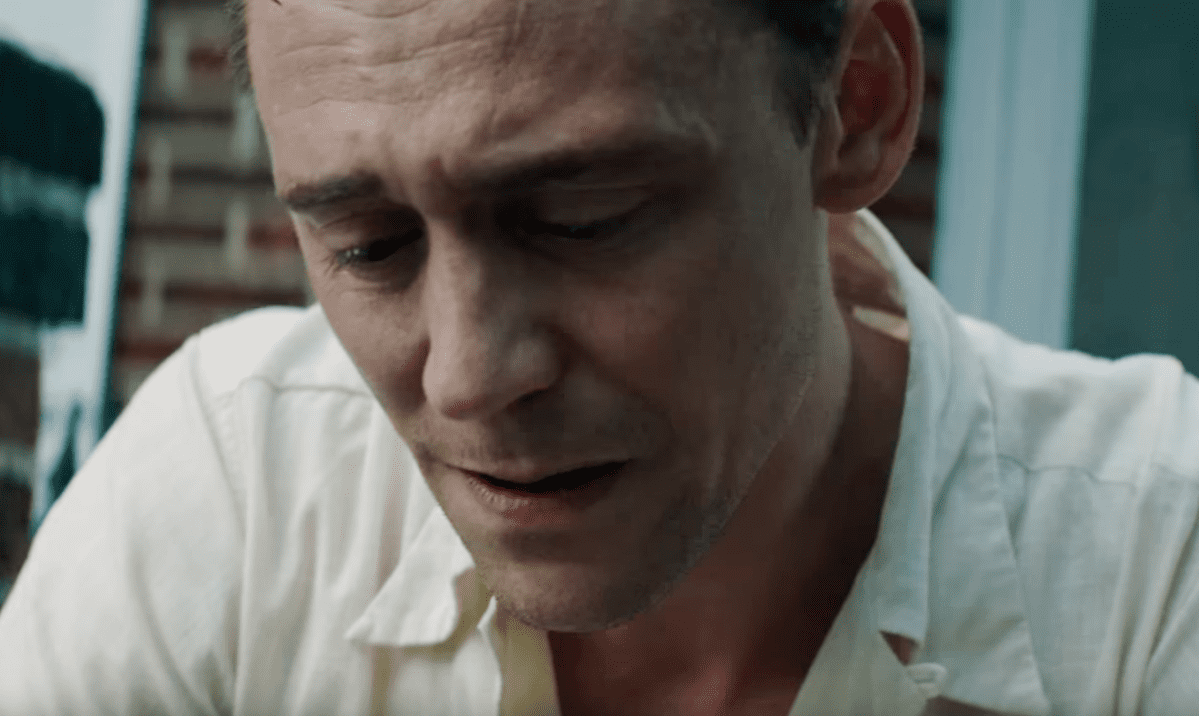 I Saw the Light (2015), BRON Studios
I Saw the Light (2015), BRON Studios
30. He Was Confronted With A Major Setback
Hank Williams was on a squirrel hunting trip with fiddler Jerry Rivers when he tried to jump across a gully. He fell, triggering his chronic spinal condition. It was so bad that he had to get surgery the next month. Doctors performed a spinal fusion in an attempt to alleviate his symptoms. Unfortunately, the hospital discharged him early with a back brace and pain medication, which went against his doctor’s recommendations.
With his existing substance issues, access to these medications was wildly detrimental.
 Sony Pictures Classics, I Saw the Light (2015)
Sony Pictures Classics, I Saw the Light (2015)
31. He Wasn’t Slowing Down
1952 was a very busy year for Hank Williams. He continued to tour with his band and appear on the Grand Ole Opry. But behind the scenes, his personal life was falling apart. Williams had a quick fling with dancer Bobbie Jett, which yielded a daughter. By spring, Audrey divorced the singer after a decade of turbulence and difficulties.
The problems she cited were quite the reveal into Williams’ world.
 I Saw the Light (2015), BRON Studios
I Saw the Light (2015), BRON Studios
32. He Was Unable To Save His Relationship
Hank Williams had cheated—but according to accusations during their divorce, so had his wife Audrey. With Williams’ health issues ramping up once more and his reliance on substances following suit, Audrey made a decision. She called him from a hotel and demanded he leave their shared house in Tennessee.
Reportedly, Williams responded with a desperate and ominous phrase, telling her: “Audrey, I won’t live another year without you”.
 Sony Pictures Classics, I Saw the Light (2015)
Sony Pictures Classics, I Saw the Light (2015)
33. He Was Quick To Find A New Lover
Afterwards, Hank Williams hastily moved on with Billie Jean Jones, who was 19 at the time of their relationship. Billie Jean had grown up living near the singer. When they reconnected, she was dating one of his friends and was still married to another man. Williams missed performances to see her and eventually won her over.
Unfortunately, being absent from performances would come with consequences.
 Sony Pictures Classics, I Saw the Light (2015)
Sony Pictures Classics, I Saw the Light (2015)
34. He Was Terminated From His Major Break
In August, the Grand Ole Opry fired Hank Williams for his inebriation and for consistently skipping concerts. His substance use was slowly destroying his career. It was hard for his associates to see him perform spectacularly while sober, but still choose to feed his addiction.
By the end of 1952, Williams’ life was looking sour, and his bad decisions kept coming.
 Sony Pictures Classics, I Saw the Light (2015)
Sony Pictures Classics, I Saw the Light (2015)
35. He Was Inundated With More Health Issues
Williams married Billie Jean Jones in October after her divorce was dubiously finalized. All the while, Williams recorded more new music and performed on and off. This could have been a positive turn of events…if he hadn’t started experiencing heart issues as the year wore on. They were so bad that when met Dr Horace “Toby” Marshall, he asked him for help.
Marshall proved to be the worst thing to happen to the singer.
 Sony Pictures Classics, I Saw the Light (2015)
Sony Pictures Classics, I Saw the Light (2015)
36. He Trusted A Quack
Marshall was actually hiding a dark secret—he had faked and forged his way into being a doctor. He bought his DSC title, and he’d already done time at the Oklahoma State Penitentiary for forgery. Now, under the pseudonym Dr CW Lemon, he prescribed Williams amphetamines, chloral hydrate, morphine, and more. This only served to make matters worse for the singer.
By the time December rolled around, the damage was done.
 Sony Pictures Classics, I Saw the Light (2015)
Sony Pictures Classics, I Saw the Light (2015)
37. He Was Forced To Rethink His Plans
In December of 1952, Hank Williams was booked to play in Charleston, West Virginia, for New Year’s Eve. A snowstorm thwarted his journey, causing all flights to be canceled. Williams had to turn to other options to make it on time. He paid a college student, Charles Carr, to be his driver to the concerts.
Neither expected the maelstrom that would come of their brief encounter.
 I Saw the Light (2015), BRON Studios
I Saw the Light (2015), BRON Studios
38. He Worried Those Around Him
Williams and Carr stopped in two towns before making it to Knoxville, Tennessee, where a plane waited to take Williams the rest of the way to Charleston. However, the weather remained a problem, and the flight turned around. At this point, Williams’ physical state was worsening, and Carr was getting nervous.
Carr was so worried, that he made a shocking decision.
 Sony Pictures Classics, I Saw the Light (2015)
Sony Pictures Classics, I Saw the Light (2015)
39. He Was Mixing Too Many Substances
After arriving at the hotel in Knoxville for a brief reprieve, Carr asked for a doctor to come check up on Williams. The singer had continued his imbibing of chloral hydrate and drinking. Not only that, but he was complaining of back pain and indigestion. This left him in a worrying state.
When the doctor arrived, he only made matters worse.
 Sony Pictures Classics, I Saw the Light (2015)
Sony Pictures Classics, I Saw the Light (2015)
40. He Was Adamant They Continue
The doctor prescribed the singer morphine and Vitamin B12 to help with pain and his indigestion. He didn’t do anything else to aid Williams with his condition, and so, he and Carr continued on their journey. It was almost midnight when they left the hotel, with Carr driving and Williams in the back seat, cozied up under a blanket.
They thought this would be the end of their woes. They were so, so wrong.
 Sony Pictures Classics, I Saw the Light (2015)
Sony Pictures Classics, I Saw the Light (2015)
41. He Was Rapidly Declining
Williams and Carr crossed state lines into Virginia as the clock ticked down to January 1st, 1953. Carr was reaching a point of exhaustion after driving for 20 hours, and they stopped in at an all-night restaurant for some refueling. Notably, Williams declined Carr’s offer to join him inside for a meal.
It wasn’t long before tragedy struck a fatal blow.
 Sony Pictures Classics, I Saw the Light (2015)
Sony Pictures Classics, I Saw the Light (2015)
42. He Was A Silent Departure
They stopped at a gas station in Oak Hill to fill up the car and get some coffee. Carr realized he hadn’t heard from Williams in a while. He checked on him in the back seat and found the singer not only unresponsive, but showing signs of rigor mortis. The singer hadn’t been alive for quite some time.
This sent Carr into a panic, and he called for help.
 Sony Pictures Classics, I Saw the Light (2015)
Sony Pictures Classics, I Saw the Light (2015)
43. They Couldn’t Save Him
Officers arrived at the scene and pronounced Williams dead. Next to him were empty cans and unfinished lyrics. Soon afterward, Dr Ivan Malinin performed an autopsy at a funeral home, and he declared heart and neck hemorrhages to be the cause of the singer’s demise.
But there were some suspicious signs on the body that made them investigate further.
44. He Was In Suspicious Condition
Dr Malinin noticed that Hank Williams had evidence of injury in his groin area and had visible evidence of a struggle. Reportedly, he had engaged in a physical altercation along the road, but there were few details about what had really happened. As a result, they couldn’t ascertain that the cause of Williams’ demise was anything but the hemorrhages in his heart and neck.
But even with this evidence, they still ran into problems when revealing the news of what happened.
 Sony Pictures Classics, I Saw the Light (2015)
Sony Pictures Classics, I Saw the Light (2015)
45. He Wasn’t Skipping A Show—Not This Time
When Williams’ demise was announced to a crowd of fans, the news was met with laughter. They didn’t believe that this untouchable celebrity could fall prey to such an event—he must have been lying to get out of performing. It was only when Cliff Rodgers made it clear that there was no joking around and that Hank Williams was no more that they finally stopped laughing.
In the surge of mourners, fellow musicians and performers paid a stunning tribute to Williams.
 Sony Pictures Classics, I Saw the Light (2015)
Sony Pictures Classics, I Saw the Light (2015)
46. He Was Loved By Many
A day after his demise was publicized, Williams’ remains were transported to Montgomery, Alabama. His devastated mother displayed him for two days until his funeral on January 4. Bereaved and mourning fans flocked to pay their respects from all over the country. Between 15,000 and 25,000 people waited outside the auditorium where the funeral was held, and 2,750 sat for the ceremony.
They were there to celebrate Hank Williams’ impact on the world.
 Sony Pictures Classics, I Saw the Light (2015)
Sony Pictures Classics, I Saw the Light (2015)
47. He Was Celebrated By The Industry
Fellow performers were the soundtrack to William’s funeral. The Drifting Cowboys, Roy Acuff, Red Foley, and more played songs from the singer’s discography as family, friends, and fans passed by the casket. He was interred at the Oakwood Annex in Montgomery.
Though he was gone, Williams has never been forgotten.
 Sony Pictures Classics, I Saw the Light (2015)
Sony Pictures Classics, I Saw the Light (2015)
48. He Was Able To Leave An Indelible Mark
Tributes to Hank Williams continue to this day. The memory of his life and his music live on in the legacy he left on the genre and the industry. While his career wasn’t as long as he might’ve liked, he was able to make genre-changing strides with his musical talent. The Hollywood Chamber of Commerce granted him a posthumous star on the Walk of Fame, and the Native American Music Hall of Fame inducted him into their ranks.
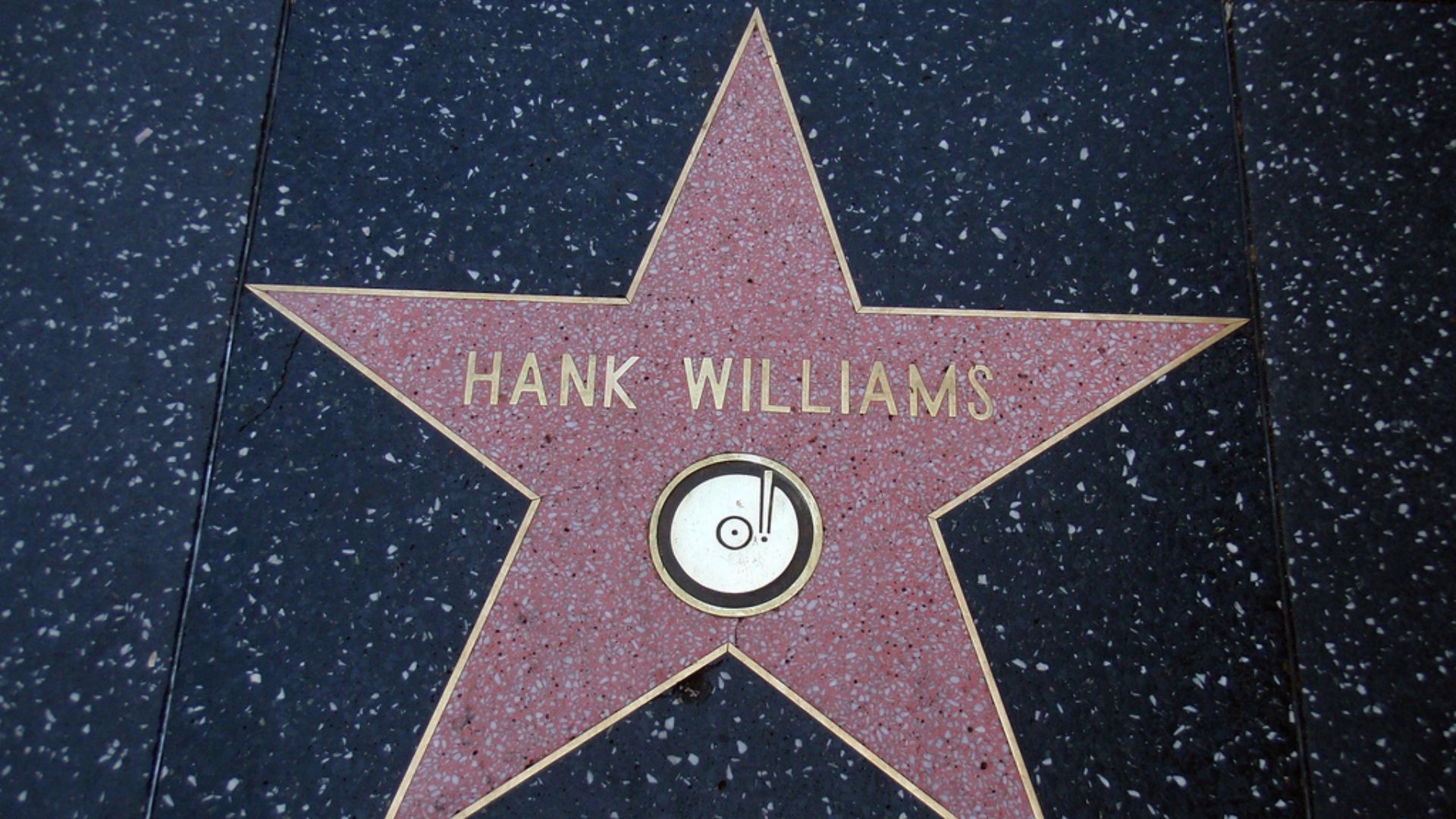 oFace Killah, Wikimedia Commons
oFace Killah, Wikimedia Commons
49. He May Have Had Another Son
Years after Williams’ untimely passing, a man born in 1943 came forward, claiming to be the country icon’s illegitimate son—but it gets even more scandalous than that. Apparently, the man’s mother was Williams’ cousin. Additionally, the man had another strange claim about the man he believed to be his father.
50. His Family May Have Had Skeletons In The Closet
Remember the boarding houses that Williams' mother ran during and after the Great Depression in order to support the family? Well, according to the man who claimed to be part of Williams' family, that the boarding houses Williams’ mother had run during his upbringing had actually been brothels. And this claim may not have been so far-fetched.
Apparently, during Williams’ lifetime, he’d alluded to a friend that men would visit the house and be led upstairs.
You May Also Like
Waylon Jennings Was Country’s Wildest Rebel
Honky Tonk Facts About Country Music Legends
The Dark Life Of Johnny Cash, The Man In Black
Sources: 1, 2, 3, 4, 5, 6, 7, 8, 9, 10, 11
If you or someone you know is struggling with substance abuse, you can find support through these links:

